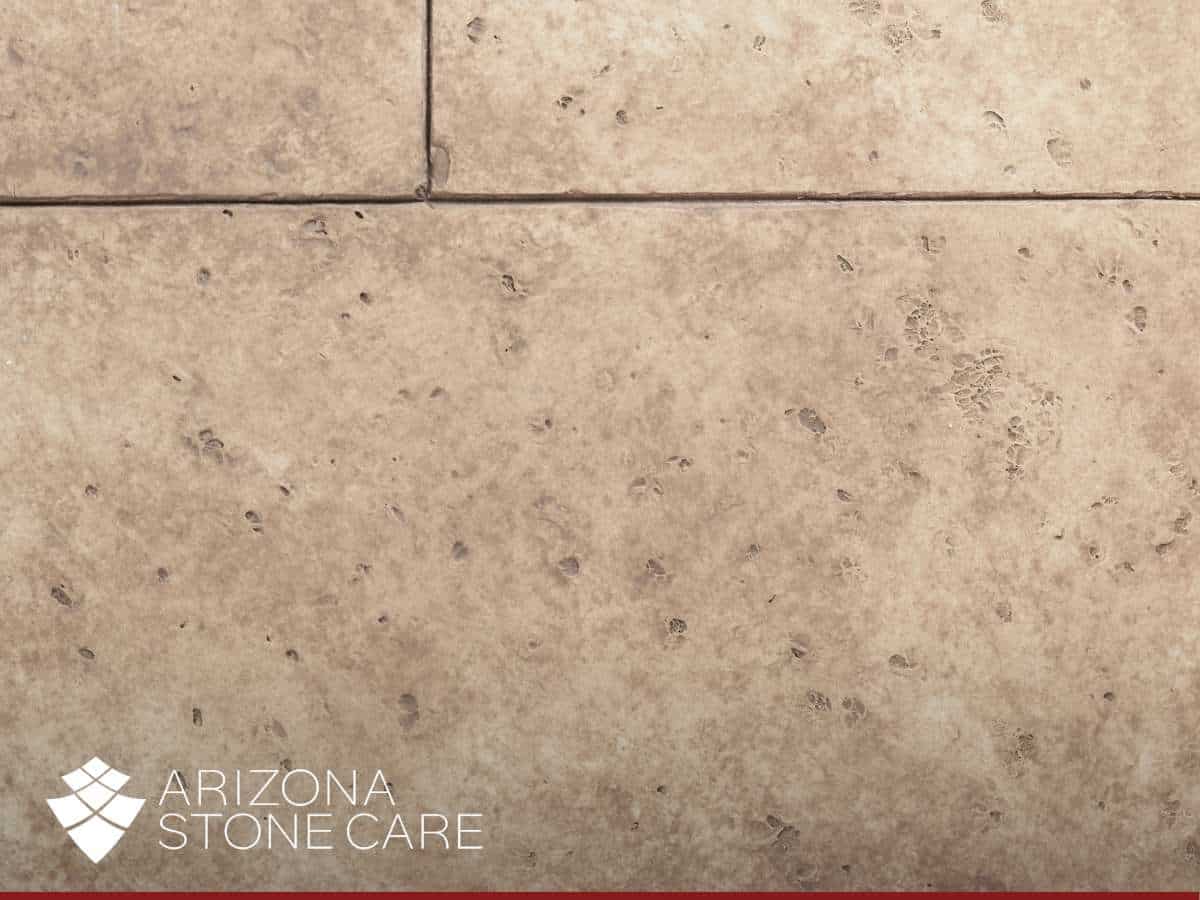Is Limestone Flooring The Right Choice For Your Kitchen?
Evaluating Limestone Flooring: Strengths, Drawbacks, Maintenance & Design Benefits For Your Kitchen
Did you know that, according to some experts, the kitchen is often the best place to start when remodeling a home? And one key detail you shouldn’t overlook is the kitchen floor! It shapes both its look and functionality. Among the many flooring materials available today, limestone stands out for its natural beauty and understated elegance. But does it live up to the demands of a busy kitchen?
Let’s explore whether limestone flooring is the right fit for your lifestyle, considering its strengths, drawbacks, maintenance requirements, and design potential.
Why Limestone Flooring Stands Out For Your Kitchen Renovation
Limestone is a sedimentary rock formed from compressed marine organisms over millions of years. This process gives each tile a unique, organic appearance with subtle variations in color and pattern. Limestone offers a neutral palette, from soft beige and ivory to muted grays, making it a versatile option for various kitchen designs..
Its natural texture provides a warm, welcoming surface underfoot that feels less sterile than ceramic tile and more timeless than engineered flooring options. For homeowners who want a kitchen that feels both luxurious and grounded, limestone offers a compelling option.
Top Benefits Of Choosing Limestone Flooring For Your Kitchen
There are several reasons why limestone continues to be a go-to choice for designers and homeowners alike:
- Timeless beauty: Its earthy tones and organic patterns create a look that doesn’t go out of style.
- Comfort: Softer and warmer than many other stones, limestone is more forgiving on the feet.
- Versatility: It pairs beautifully with various kitchen styles, from traditional farmhouse to sleek contemporary.
- Natural variation: Each tile tells its own story, adding character and depth to the space.
However, it’s important to understand that while limestone is beautiful, it’s not the most low-maintenance option out there.
Important Considerations Before Installing Limestone Flooring
Limestone’s elegance comes with certain considerations. As a natural material, it’s more delicate than synthetic alternatives and requires mindful care.
It’s a Porous Material
Limestone absorbs liquids easily, which can lead to staining, especially in a high-use space like a kitchen. Spilled wine, oil, or acidic ingredients can leave marks if not cleaned quickly. That’s why sealing your floor properly and regularly is essential to preserve its appearance.
For example, using natural stone cleaners that are specifically made for sensitive surfaces like limestone helps protect the stone without causing etching or discoloration. Avoiding generic household products is a must.
Maintenance Is Crucial
This isn’t a floor you can install and forget. Limestone needs a bit of love to stay in top shape. From sealing to spot cleaning, homeowners need to be proactive. But when done right, the payoff is a stunning floor that ages gracefully over time.
It’s Softer Than Other Stones
Limestone is more prone to scratching and chipping compared to granite or slate. While not fragile, it does require some caution, especially in kitchens where heavy pots and pans are often in use. Strategic use of mats and care during daily tasks can help extend the life of your flooring.
Limestone vs. Other Kitchen Flooring Options
Before making your final decision, it’s helpful to understand how limestone compares to some of the most common alternatives:
Porcelain Or Ceramic Tile
Porcelain is incredibly hard, stain-resistant, and easy to maintain. However, it lacks the warmth and organic feel of natural stone. While great for utility, it may not offer the same aesthetic appeal as limestone.
Hardwood Flooring
Hardwood brings undeniable warmth and charm to the kitchen, but it’s highly sensitive to moisture and spills. Limestone, while still porous, handles moisture a bit better when properly sealed.
Luxury Vinyl Or Laminate
These synthetic options are popular for their affordability and durability, but they don’t offer the same depth or authenticity as real stone. If you value natural materials, limestone is in a different league.
Limestone
It balances aesthetics with comfort, offering a unique blend of old-world character and modern style. With proper care and natural stone restoration when needed, limestone can last decades while maintaining its visual appeal.
Maintenance Tips To Care For Limestone Kitchen Floors
To enjoy the full beauty and lifespan of your limestone flooring, adopting the right care habits is essential. While limestone is durable, it’s also a natural material that benefits greatly from mindful maintenance.
Prevent Damage Before It Happens
Be proactive by placing rugs or runners near high-traffic zones, especially around the sink, stove, and refrigerator. These areas are most prone to spills and splashes. Using mats helps reduce the risk of scratches from dropped utensils or grit on shoes, and prevents stains from water, oils, or acidic substances like tomato sauce and lemon juice.
Clean Spills Immediately
Limestone is naturally porous, which means it can absorb liquids quickly. If a spill sits too long, it can leave a lasting stain or even cause etching. These dull spots on the surface often result from contact with acidic substances. To protect the stone, keep a soft cloth or paper towels handy and clean up any messes as soon as they occur. Quick action can save you from more serious damage later.
Choose The Right Cleaning Products
Avoid using common household cleaners that contain bleach, ammonia, or vinegar, as they’re too harsh and can degrade the surface over time. Instead, use natural stone cleaning solutions that are specially formulated for materials like limestone. These products are pH-balanced, gentle on the stone, and strong enough to clean without compromising its finish or structure.
Schedule Periodic Deep Cleaning
Even with careful daily upkeep, grime will eventually settle into grout lines and the tiny pores of the stone. That’s where professional help comes in. Regular tile and grout cleaning, scheduled every few months or at least once a year, can refresh the entire floor. Experts use specialized equipment and gentle products that remove deep-seated dirt without harming the limestone, helping preserve its appearance and texture over time.
Design Tips For Highlighting The Beauty Of Limestone Kitchen Floors
Beyond being functional, limestone flooring can also elevate the overall look of your kitchen. With a few thoughtful design choices, you can highlight the stone’s best features and create a warm, inviting atmosphere.
Pick The Right Finish
The finish of your limestone tiles affects both appearance and practicality. Tumbled and brushed finishes are ideal for kitchen use. They provide a textured surface that enhances slip resistance and helps camouflage minor scratches or daily wear. Plus, these finishes give the floor a rustic, time-worn look that adds character.
Go Big With Tile Size
Larger limestone tiles, such as 12″x24″ or even bigger, create a sense of openness and flow. Fewer grout lines mean a cleaner, more seamless look, which can be especially beneficial in compact or galley-style kitchens. It also means less grout to maintain and clean, making the floor easier to care for over time.
Use Thoughtful Lighting
Limestone reflects light in a soft, diffused way that creates a cozy and organic atmosphere. To make the most of this quality, consider installing warm lighting such as soft white under-cabinet LEDs or vintage-style pendant fixtures. These lighting choices highlight the stone’s natural tones while adding a welcoming and stylish touch to your kitchen.
Contrast With Cabinetry
One of limestone’s strengths is its versatility. Its neutral palette pairs beautifully with bold cabinet colors. For a dramatic effect, consider dark wood cabinets or shades like espresso, navy blue, or forest green. This contrast adds visual depth while allowing the stone to shine as a natural, calming counterbalance.
Is Limestone Right For Your Kitchen?
If you value elegance, authenticity, and warmth in your home, limestone may be a perfect fit. Its timeless appeal and natural charm can elevate your kitchen like few other materials. That said, it does require commitment. You’ll need to seal it regularly, clean it carefully, and sometimes bring in pros for natural stone restoration to keep it looking its best.
Limestone flooring is a great option if:
- You love the look of natural materials and want something truly unique.
- Your kitchen gets moderate use and you’re mindful of spills and scratches.
- You’re willing to follow a regular maintenance routine.
- You want a floor that complements a warm, earthy, or classic interior.
- You’re not afraid to invest in occasional professional upkeep to maintain its beauty.
However, if you’re looking for something ultra low-maintenance, resistant to heavy wear, or completely stain-proof, limestone might not be the best match for your needs.
For homeowners comfortable with that level of care, the reward is a kitchen floor that not only fulfills a practical role but also stands out as a visual centerpiece, bringing sophistication and warmth to the heart of your home.
Why Professional Care Is Crucial For Maintaining Your Limestone Kitchen Floors
Whether you’re installing limestone for the first time or need help bringing an older floor back to life, Arizona Stone Care has the experience and tools to get the job done right. Our expert natural stone cleaners in Arizona are here to keep your kitchen looking beautiful and lasting longer.
Get in touch with Arizona Stone Care today and let us help you protect and preserve one of the most important surfaces in your home. Contact us!
Arizona Stone Care
Email: [email protected]
Website: www.arizonastonecare.com
Mesa Location
505 W 8th Ave #17
Mesa, AZ 85210
Office: 480-232-6264
Scottsdale Location
6908 E Thomas, Suite #202-1,
Scottsdale, AZ 85251
Office: 602-932-0011
Chandler Location
2101 N Evergreen, unit 1031
Chandler, AZ 85225
Office: 480-531-6796




